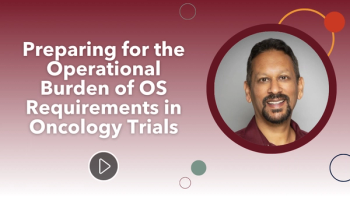
- Applied Clinical Trials-09-01-2006
- Volume 0
- Issue 0
Australia: The Number One Place for Clinical Trials?
Favorable cost, research quality, and timeline measures are attractive to overseas sponsors.
Although the major drug development regions of the world are recognized to be North America, Europe, and Japan, continuing growth of the pharmaceutical market in emerging regions is being accompanied by similar growth in clinical trial activity outside the traditional "big three" markets, as reflected in recent editions of Applied Clinical Trials where feature articles have included overviews of Africa and Asia. Australia might be considered as laying somewhere in between: Australia's market size certainly does not compare to the big three pharma superpowers; nor can it be considered as an emerging market. Major Australian cities regularly rate highly on quality of life surveys, but it may surprise some that a recent international benchmarking study undertaken by The Economist Intelligence Unit (
The Economist Intelligence Unit study, "Benchmarking Study of the Australian and International Pharmaceuticals Industries," was commissioned by the Australian Government Department of Industry, Tourism and Resources; Invest Australia; and the Victorian Government Department of Innovation, Industry and Regional Development.1 It compared and benchmarked Australia against the United States, the United Kingdom, Germany, Japan, Singapore, and India across a range of indicators including clinical trials, the intellectual property system, the regulatory environment, and the investment and business environment. Australia ranked second overall, with Singapore ranking first. Australia scored highly for many indicators relating to the industry skills pool, practices, and regulatory processes, but scored below Singapore and India on costs. In relation to clinical trials, Australia ranked first overall (as a weighted aggregate), boosted by low average costs of clinical trials, a relatively large amount of recognized trial sites, and a high percentage of clinical trials completed within the allocated time. Of particular interest to overseas sponsors was the observation that Australia does less well on the total amount of clinical trials taking place even on a per-capita basis, suggesting there is capacity for further growth within the sector.
While being identified as an attractive location for conducting clinical trials is music to the ears of the Australian pharmaceutical and biotechnology industry—an AUD$12 billion sector employing 35,000 people, exporting almost AUD$2 billion a year,1 and the second largest contributor of manufactured goods to the Australian economy (more than its wine industry)—potential clinical trial sponsors are perhaps more concerned with the realities. They might ask the following: Will my intellectual property be protected? How do I obtain regulatory approval? How long will it take? How fast can I enroll patients? How do I get my clinical trial material into Australia? Will the study be performed according to ICH GCP? Will the FDA or the EMEA recognize the quality of the study and accept the data?
ACTBITS
Regulatory framework in Australia
Perhaps reflecting its historical and constitutional links with Great Britain, Australia's regulatory framework for therapeutic goods is primarily based on that of the European Union. Periodically, the Australian Therapeutic Goods Administration (TGA) reviews regulatory guidelines issued by the European Community (EC) and issues statements on whether a specific EC guideline has been endorsed or not. In the case of particularly innovative, controversial or evolving regulatory matters, the TGA tends to take a best practice approach, whereby it considers existing overseas guidelines, particularly those issued by the ICH, EC, and FDA, in the context of the local Australian industry, health care, and social factors.
A good example of this best practice approach is the TGA and the National Health and Medical Research Council (NHMRC) jointly established Review of the Australian Arrangements for Clinical Trials & Access to Unapproved Therapeutic Goods (referred hereafter as "the Review") that was commissioned in April 2003, and the report published in February 2005.2 The motivation for commissioning this Review was multifaceted, including: 1) the EU Clinical Trial Directive 2001/20/EC; 2) the goals of ensuring the timely access to safe and efficacious new therapies for the public, public safety, and that the Australian pharmaceutical industry remains internationally competitive; and 3) the expected formation of the joint Australian and New Zealand Trans Tasman Regulatory Agency in the second half of 2007.
CTs in Australia: Schemes, Locations, Phases
Public submissions in response to the Review's report closed on 8 July 2005 and are under consideration. The response of the Australian authorities to the Review's recommendations and the public submissions is expected in the second half of 2006, but most anticipate that the EU Clinical Trial Directive 2001/20/EC will not be fully endorsed and that the existing regulatory framework for clinical trials in Australia, the Clinical Trial Exception (CTX) and Clinical Trial Notification (CTN) schemes (see sidebar, "Regulation of Clinical Trials: Comparing the CTN and CTX Schemes"), will continue albeit with some tweaks here and there—such as additional support for the institutional ethics committees (IECs), especially in the context of advanced and high-technology investigational products where the TGA is likely to coordinate the drafting of additional guidance documents to assist the EC, and the EC is likely to have access to a committee of national experts for use on a case-by-case basis. Although these additional measures may in some cases cause delays in the CTN process, this is counterbalanced by the fact that they are also likely to reduce the need for the EC to refer such clinical trials to the TGA (via the CTX process).
Regulation of Clinical Trials: Comparing the CTN and CTX Schemes
Gene therapy and related therapies
It is important to note that clinical trials involving gene therapy or related therapies require approval from both the IEC and the Gene and Related Therapies Research Advisory Panel (GTRAP), an expert committee established by the NHMRC.
Importation of material
Because it is an island, Australia is quite protective of its borders. Typically, a specific import permit is not required for clinical trial material, however some clinical trial materials may be subject to additional restrictions and separate approvals may be required (for example, products containing substances that are listed as prohibited imports, and materials of biological origin).
CTs in Australia: Pros and Cons
Snapshot of CTs conducted in Australia
As highlighted in the Review, there is a lack of publicly available data on the nature and number of clinical studies conducted in Australia, especially in recent years. Data taken from 1990 to 2000 presented in Figure 1(a) demonstrate that the far majority of clinical trials are conducted under the CTN scheme. The Review also indicates that during the 1990s the majority of clinical trial sites were in Victoria and New South Wales [see Figure 1(b)], the Australian States with the greatest population, and the far majority of studies were Phase III [see Figure 1(c)]. Although the data presented in Figure 1 is several years old, there is little reason to expect that the predominant locations of the clinical trial sites have changed significantly, despite increasing activity in the biotech industries within Western Australia and Queensland. Similarly, one would not expect the proportion of the study type performed to have changed dramatically, although if the Review's recommendations are endorsed by the Australian authorities the comparative simplicity of the CTN scheme in comparison to the FDA investigational new drug application (IND) or EU clinical trial application (CTA) procedures might become increasingly attractive to time-and money-sensitive sponsors eager to generate early proof-of-principle clinical trial data.
Adherence to GCP mandatory
Australia has a strong reputation for the quality of its scientific and medical research. In relation to Good Clinical Practice, the TGA has adopted the European Guideline CPMP/ICH/135/95 (and therefore the ICH E6 guidance) in principle, with some elements modified according to local regulatory requirements. Adherence to ICH GCP is, under Regulation 12AB of the Therapeutic Goods Regulations 1990, mandatory in Australia for trials conducted under CTN or CTX.
Pros and cons
As highlighted in the sidebar "CTs in Australia: Pros and Cons," the regulatory framework for clinical trials in Australia, which is internationally recognized for its science and highly trained workforce and has an intellectual property regime that compares favorably to the European Union and the United States, is quite attractive for overseas sponsors. Moreover, Australia appears to deliver in terms of ICH GCP standard clinical trials performed in a timely and cost effective manner (due to the spending power of the U.S. dollar and the Euro in Australia, and the relative lower cost of medical procedures and investigator fees). Nevertheless, the total number of studies conducted is relatively small in comparison to the EU or the United States. The reasons for this are multifactorial, including the modest size of the local industry and the local pharmaceutical market. Furthermore, despite a relatively multicultural society, especially on the East coast, the relative size of the potential trial subject pool is modest and perhaps counterbalances the time and cost efficiencies that Australia can offer in terms of trial approval and conduct, particularly for larger trials. An additional complication for overseas drug developers is the need for a local commercial sponsor for an Australian study (not all local CROs are willing to fulfil this role), and the fact that organizing local insurance for the study can often be problematic (due to the relative lack of local insurance brokers and the relatively high level of insurance that might be required). Of course geographical distance and time differences also must be considered, although with strong project management the time differences can be exploited by increasing the overall working day for a particular project.
The pros and cons of conducting clinical trials in Australia were highlighted at the AusBiotech 2005 National Biotechnology Conference and Business Partnering and Investment Forum that was held in Perth from 20–23 November. During the open-panel forum at the conclusion of the Clinical Trials session, the different perspectives of the delegates were highlighted: the local CROs quite rightly and passionately pointed to the pros, including those listed in the sidebar. Many of those delegates employed within the Australia subsidiaries of big pharma, however, pointed out the cons that they find difficult to overcome when trying to convince their EU-or U.S.-based head office that Australia should be considered in the planning of a specific clinical trial program.
The AusBiotech 2005 session highlighted very well the realities of clinical trials in Australia. European Union- and U.S.-based drug developers must focus their development activities in those regions, and it is no doubt preferred by the regulators in those regions. However, in certain circumstances Australia is an attractive option. As discussed earlier, in many cases early phase or proof-of-concept studies can be conducted without the burden of an EU CTA or U.S. IND, a significant advantage in these extremely competitive times. With the data generated to ICH GCP standards and subject to stringent IP regimes, it can be used to add substance to fundraising or partnership activities and to support future clinical trial applications in the EU and United States. For later stage development, given their quality and cost-effectiveness, Australian sites in an international multiple-site clinical trial program can add value, especially in indications that have a high prevalence rate in Australia (such as melanoma or asthma) or that are seasonal (such as rhinitis). Comparative Phase III data generated in Australia is also of significant value for local pricing and reimbursement activities. Of course with strong project management there is also the possibility of taking some time to soak in the sun—just remember to pack the sunscreen and a good hat!
Stuart J. Mudge, PhD, is with Voisin Consulting Australia Pty Ltd, Milton House, 25 Flinders Lane, Level 1, Melbourne, VIC 3000, Australia, +613 9663 9008, fax +613 9663 9009, email:
References
1. Benchmarking Study of the Australian and International Pharmaceuticals Industries—A study undertaken for the Australian Government Department of Industry, Tourism and Resources, Invest Australia and the Victorian Government Department of Innovation, Industry and Regional Development. The Economist Intelligence Unit, The Economist (September 2005).
2. "Report of the Review of Access to Unapproved Therapeutic Goods —jointly commissioned by the Therapeutic Goods Administration (TGA) and the National Health and Medical Research Council (NHMRC)," Banscott Health Consulting Pty Ltd (22 February 2005; see http://
Articles in this issue
about 19 years ago
The EDC Decisionabout 19 years ago
Training in Pediatric Researchabout 19 years ago
Spotting the "New" Managed Site Networksabout 19 years ago
Drug Development on Rails: Part Twoabout 19 years ago
Research for the Real Worldabout 19 years ago
Building Research Capacity into Drug Developmentabout 19 years ago
eShowcase: ViewPoint 3.6about 19 years ago
eShowcase: PHT eSense Sensorsabout 19 years ago
New Research Models Spur Third-World Effortsabout 19 years ago
eShowcase: TrialSpace DesignerNewsletter
Stay current in clinical research with Applied Clinical Trials, providing expert insights, regulatory updates, and practical strategies for successful clinical trial design and execution.






.png)



.png)



.png)
.png)
